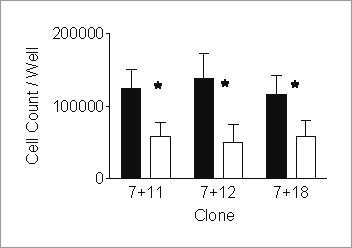Print version
Search Pub Med
Activities of vascular smooth muscle cells: a comparison of intimal and medial populations and their regulation Although there is considerable heterogeneity within vascular smooth muscle cell (VSMC) populations (Hao et al., 2003), those from healthy vessels are predominately spindle-shaped in vitro whereas those from areas of disease are predominately epithelioid shaped. We have previously reported that epithelioid VSMCs, but not spindle VSMCs, secrete endothelin-1 (ET-1) (Stevenson et al., 2003). Here we have investigated whether the production of ET-1 by epithelioid VSMCs may regulate the activities of spindle VSMCs. Monoclonal populations of spindle and epithelioid VSMCs were derived from WKY12-22 rat VSMC by dilute plating. The effects of ET-1 (10-9-10-6M) on cell proliferation in either single or combined populations were determined by cell counts after 72h incubation (37°C, 5% CO2) in DMEM plus 2% FBS with or without the addition of the ETA/B receptor antagonist A182086 (10-6M) (n=9).
Figure 1. Proliferation (72h) of spindle (clone 7) and epithelioid (clones 11, 12 and 18) in co-cultures (filled columns) or as predicted from addition of proliferation rates in individual cultures (unfilled columns). Data represents mean ± s.e.m. from n=9 observations for each. *denotes p < 0.05 paired T-test
ET-1 increased the proliferation of spindle but not epithelioid VSMC (data not shown). When co-cultures of spindle (clone 7) and epithelioid (clones 11, 12 and 18) VSMCs were established the combined proliferation was significantly greater than the predicted additive proliferation of the clones grown individually (Figure 1). This combined proliferative response was reversed by A182086. These data suggest important cross talk between VSMC phenotypes. Such cross-talk may well be central to the regulation of VSMC activity in health and disease.
Bishop-Bailey, D. et al (2002) Circ. Res., 91, 210-217. Research supported by St Bartholomew’s and the Royal London Charitable Foundation. |
|


